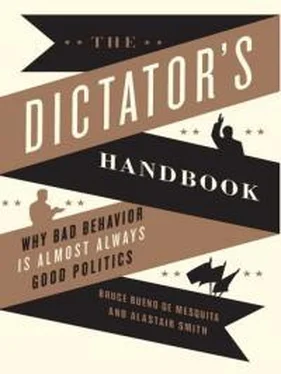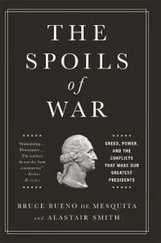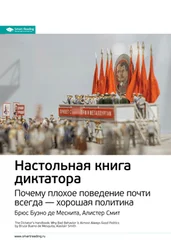Earthquakes and Governance
An earthquake of magnitude 7 on the Richter scale is ten times larger than one of magnitude 6, just as an 8 is ten times larger than a 7 and 100 times bigger than a 6. The city of Bam in Iran suffered a terrible earthquake on December 26, 2003. Its magnitude was between 6.5 and 6.6. Of the city’s approximately 97,000 residents, 26,271 were killed. Chile, with a similar per capita income to Iran, experienced a magnitude 7.9 earthquake on June 14, 2005. That is twenty-five times bigger than the Bam earthquake and it struck in a more populous area. The Chilean quake hit the city of Iquique with a population of about 238,000. Remarkably, it killed only eleven people. Was this good luck or good policy at work?
Chile and Iran both regularly experience substantial seismic activity. As such, we should expect that their governments are attentive to the risks of earthquake and the devastation that can befall their people. But everything we have argued urges us to be cautious about such an optimistic view of governance.
Just to look at the past fifty years of history, Iran has consistently been a small-coalition regime. The shah’s government may well have depended on a somewhat smaller group of essentials than Iran’s current theocracy, but the two regimes are in practice not so different. By our way of thinking, therefore, Iran is not a place expected to foster the kinds of political freedoms that make it easy for people to express what they want and for the government to make a serious effort to fulfill those wants.
Chile’s last half century was a bit more complex. The country was a fairly democratic polity from 1960 until 1973, and was then plunged into a small-coalition regime that lasted until the end of the 1980s. By 1989 it was well on its way back to dependence on a relatively large coalition to sustain the government. This means that we should expect a substantially more public-goods oriented approach to seismic activity in Chile than in Iran at least during the 1960s and since 1990.
Chile experienced an extraordinary 9.5 earthquake in 1960. It killed 1,655 Chileans (as well as sixty-one in far-away Hawaii following the tsunami that resulted) and left about 2 million people homeless. Chile’s fairly democratic government (at the time) immediately set about developing a new, rigorous seismic code for all new construction to protect its citizens from such destruction in the future. Left largely unaltered during the long years of military dictatorship, the code was revisited in 1993 when the once-again democratic Chile made upgrades to reflect improvements in technology. It seems that Chile’s seismic code was not only rigorous but also well enforced, resulting in greatly enhanced public safety against the ominous threat of natural earthquake disaster.
Unlike Chile, Iran enjoyed no such period of democratic rule during the last half century. As a result, there was no impetus for the government to strengthen its policies for protecting the public from disaster. As reported by the Iranian studies group at the Massachusetts Institute of Technology (MIT) following the Bam earthquake, “Considering the high seismicity of Iran, a comprehensive hazard reduction program was launched in 1991, but the effectiveness of the measures have [sic] been limited by lack of adequate funding and institutional coordination.... The principal causes of vulnerability in the region include . . . inefficient public policies, and lagging and misguided investments in infrastructure. [Emphasis added]”14 Translation: the small-coalition Iranian regimes of the shah and the ayatollahs have siphoned off funds for their private benefit instead of directing them toward improved public security against the predictable threat of seismic disasters. They provide no means for the people to make clear their desires, and they take few actions to secure their citizens against the predictable danger of death and destruction from seismic shocks.
The comparison of Iran and Chile is far from unusual. China, like Chile, suffered a 7.9 earthquake of its own. It struck in May 2008, bringing down many shoddily constructed schools and apartment buildings, killing nearly 70,000. Even accounting for variations in Chile’s and China’s populations and incomes, it is impossible to reconcile the difference between China’s death toll and Chile’s, except by reflecting on the incentives to enforce proper building standards in democratic Chile—incentives missing in autocratic China and Iran. And lest it is thought these are special cases, it is worth noting that democratic Honduras had a 7.1 earthquake in May 2009, with 6 deaths and Italy a 6.3 in April 2009 with 207 deaths. Even Japan’s horrendous death toll following its massive 8.9 magnitude earthquake and tsunami in March 2011 is surely lower than a comparable event’s death toll would have been in a small coalition regime. Japan spent a fortune on quality construction to withstand earthquakes but almost no one can afford to protect against a seismic event and tsunami of the magnitude Japan experienced. Big coalitions save lives because big-coalition leaders know that if they don’t protect their ordinary citizens they’ll be turned out of office in favor of someone who will.
Earthquakes and tsunamis are hard to foresee. But their aftermath is not. When there are lots of essential supporters, rescue is swift and repair is quick and effective. If it isn’t as swift and effective as people expect—and in large-coalition systems they expect it to be remarkably swift and effective—then political heads role. This is what happened, as we will see later, following Hurricane Katrina in the United States. We will also see that when there are few essentials, poor relief does not lead to heads rolling. Rather, autocrats actually prefer to exaggerate damage to attract more relief funds. Once aid is secured, it is redirected into the private accounts of political elites, rather than being steered toward rebuilding. Consider the relief effort in Sri Lanka following the tsunami of 2004.
Such differences can be observed within nations too. Edward Luce toured refugee camps in Tamil Nadu on the east coast of southern India in the wake of the 2004 tsunami.15 Although 15,000 to 20,000 people were killed and there was widespread devastation, within a year virtually everyone had been resettled and the government had provided compensation for the losses of life and property. The people, although relatively poor, were highly informed about the process. The reason: elections in Tamil Nadu are highly competitive, as the patronage style of bloc voting that is still prevalent in northern India has broken down. When Luce toured the more northerly state of Orissa in 2006 he found people still housed in tent villages. But these were not victims of the 2004 tsunami: they were still coping with the ramifications of a cyclone that happened in 1999.
Each of these examples of natural disasters tells a variation upon the same story. When governments depend on many essentials, they need to allocate the government’s resources and provide valuable public goods like reliable building codes, relief efforts to rescue the victims of disaster, and, when possible, protective barriers like levees and dikes to forestall disaster. To know what the people need, governments need to make it easy for the public to make clear what basket of public goodies they desire. That is best done by allowing the least costly and most precious public good of all: freedom.

Public goods can be for the public’s good. Yet they can also be a means of exploiting the public. In large-coalition environments, public goods overwhelmingly enhance public well-being. In small-coalition settings this is not true.
Читать дальше













